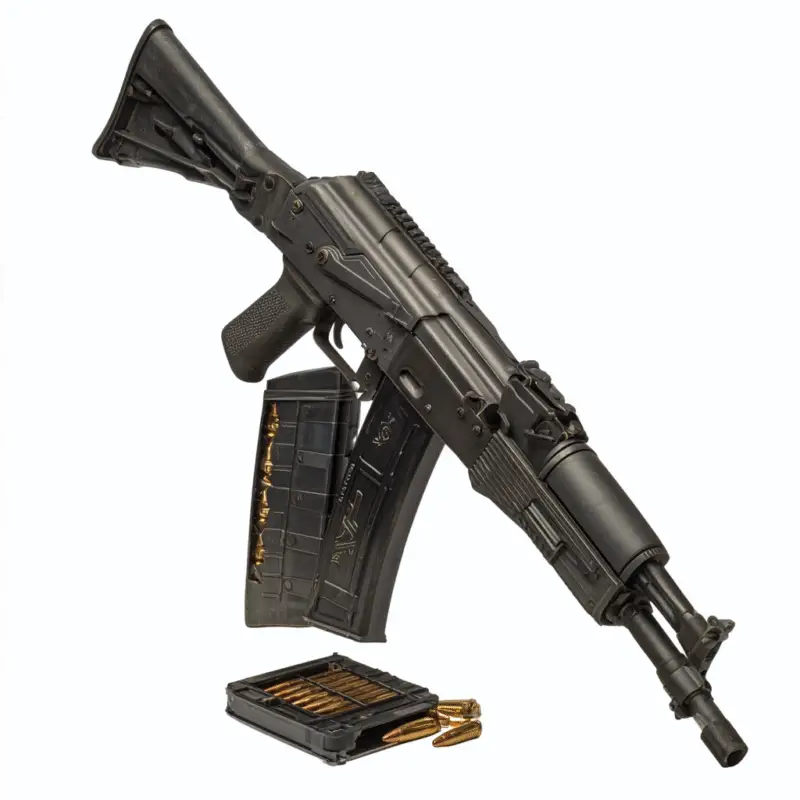Blog
Kalashnikov KR9 Magazine Performance and KP9 Connection

The day my own Kalashnikov KR9 Magazine finally arrived felt like Christmas morning. The case was simple, no unnecessary flair, but inside it held something I knew would change the way I thought about shooting. I’d waited weeks for the background check, paperwork, and shipping delays, but the moment I lifted the rifle, none of that mattered anymore.
The KUSA KR9 had the same unmistakable DNA I’d admired when handling my friend’s. Compact yet balanced, rugged yet refined, it was clear this wasn’t just a civilian toy. It was engineered with serious shooters in mind, inspired by the Vityaz KP9, but born under American craftsmanship.

Before I even fired a round, I went through the familiar ritual of disassembly and inspection. Simplicity—that was the word that came to mind. The parts locked together the way they were supposed to. The tolerances felt right. There was no sense of fragility, no compromise that sometimes shows up in firearms hastily brought to market.
I couldn’t help but admire the KR9 magazine as I checked the feed lips and spring tension. In my experience, magazines are often the weakest link in a firearm. Poor design or weak construction leads to misfeeds, jams, and frustration.
But the Kalashnikov KR9 magazine seemed to be cut from the same philosophy as the rifle itself: built for punishment, but smooth where it mattered.
At the range, the rifle came alive. Chambered in 9mm, it made shooting accessible and affordable, but without losing the authoritative feel of the Kalashnikov lineage. Compared to a standard AR platform chambered in pistol calibers, the KR9 felt sturdier, more deliberate. The folding stock locked against my shoulder with confidence, and recoil was so light that quick follow-up shots became second nature.
That’s when the Kalashnikov KP9 came to mind. Its close sibling, the KP9, also chambered in 9mm, had been marketed heavily as a modern American-made interpretation of the Russian Vityaz KP9. Where the KP9 excelled in compact versatility, the KR9 carried its own weight as the slightly more refined rifle variant.
I had the chance to fire both side by side when another shooter at the range brought his KUSA KP9. The similarities were obvious, almost like brothers raised under the same roof. The KP9 magazine slid into place with the same satisfying snap as the KR9 magazine, and performance between the two was close enough that preference boiled down to whether you wanted a pistol-style platform or a rifle-style one.
But the twist came when I noticed the crowd gathering around us. People weren’t just curious—they were enthusiastic. A few AR shooters stopped to ask questions, impressed by how flat the KR9 shot compared to their carbines. An older man who admitted he wasn’t “a Kalashnikov guy” said he could see himself making an exception for this one. Even the range officer came by to check it out, mentioning he’d seen more Kalashnikov USA KR9 rifles coming through lately than ever before.
The popularity surprised me. In an American market saturated with ARs and endless Glock variations, the fact that a Russian-inspired 9mm carbine was turning heads said something. It wasn’t just about novelty—it was about performance and reliability that people could feel for themselves the moment they pulled the trigger.
Over the next month, I put the rifle through its paces. Rain, mud, heat—it didn’t matter. Every time, the KR9 fired without complaint. The magazines fed smoothly, cleaning was straightforward, and accuracy remained consistent. The more I used it, the more I trusted it.
One evening, after a long day at the range, I sat at my workbench comparing notes between the KR9 and the KP9. The KUSA KP9 had its loyalists, especially those who wanted a pistol variant that could easily take a brace or conversion. The Kalashnikov KR9, however, seemed to win over shooters who wanted something closer to a classic carbine—balanced, ready to shoulder, and uncompromising in feel.
It was then I realized why the KR9 was gaining traction in unexpected places. It wasn’t fighting against the AR market—it was carving its own lane. For shooters tired of the same platforms, the Kalashnikov KP9 and KR9 represented something different: a connection to heritage, combined with American build quality and compliance.
I even found myself spending evenings on forums where enthusiasts debated the finer points of Vityaz KP9 history, magazine interchangeability, and the future of Kalashnikov USA. Some argued the KP9 magazine design was underrated, while others praised the KR9’s straightforward ergonomics. Either way, there was no denying that these rifles were building a strong following.
The most surprising twist, though, came from a friend who worked in law enforcement. Over a beer, he admitted that he and a few colleagues were considering pooling resources to buy a KR9 for their off-duty training sessions. “It’s not department-issued,” he said, “but it just makes sense. Reliable, cheap to run on 9mm, and it shoots flat. Some of the guys are seriously looking into it.”
That’s when it hit me: the KR9 wasn’t just a range toy or a collector’s curiosity. It was earning respect across the board—from casual shooters, to competitive enthusiasts, to professionals who demanded reliability.
By the end of the month, the Kalashnikov KR9 had earned a permanent place in my collection, not just because of its heritage, but because it delivered in ways I didn’t expect. It had surprised not only me but also people who never thought they’d admire anything outside of their tried-and-true ARs or Glocks.
The story of the KR9 wasn’t just about a rifle. It was about how heritage, design, and practicality could come together to create something that resonated with a wide audience. And as I placed the rifle back in its case after another flawless range trip, I knew this was just the beginning of a much bigger story.
